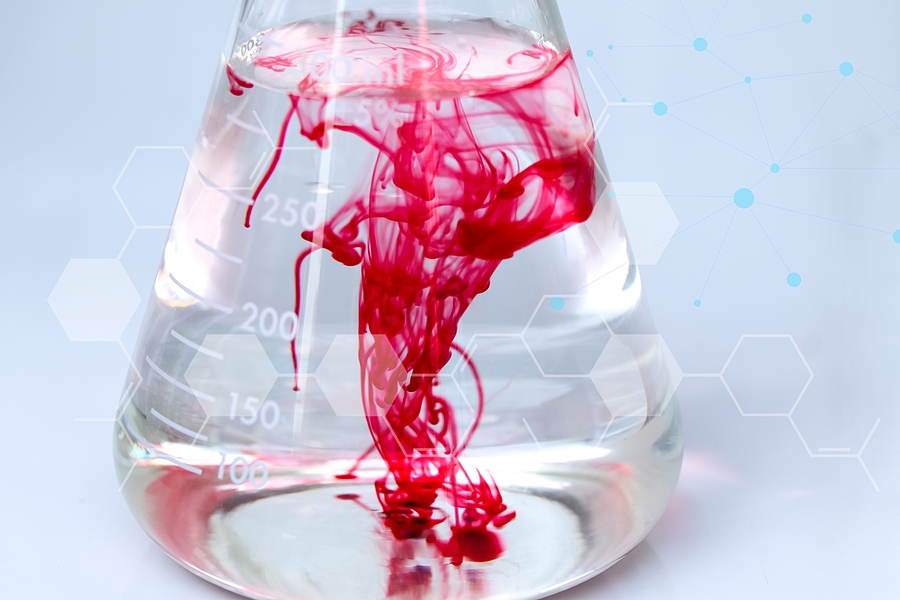News
What Are Forever Chemicals & Why Are They A Problem?
Freshwater sources around the UK – and, indeed, around the world – are being put under increasing amounts of pressure because of climate change, population growth, increased urbanisation, water mismanagement… and, of course, pollution.
This latter issue is only going to become more problematic as time goes on, unfortunately, as climate change brings with it more frequent and more extreme weather events, such as flooding and drought.
During prolonged periods of dry weather, the ground becomes so baked that when it does rain, the soil struggles to absorb the water, which increases the risk of surface water runoff. This, in turn, increases the risk of herbicides, pesticides and so on being washed into rivers, lakes and streams, which can have a big impact on water quality.
But it’s not just pesticides and herbicides that we need to be aware of, with the issue of pollutants known as forever chemicals hitting the headlines over the last few weeks or so.
What are forever chemicals?
Perfluoroalkyl and polyfluoroalkyl substances (or PFAS) are manmade chemicals that have potential links to adverse human and environmental health effects.
They’re known as ‘forever chemicals’ because they don’t break down in the natural environment. There are around 10,000 different types of these chemicals, found in a vast array of different products, as well as waste and industrial processes.
Mapping of thousands of sites across the UK and Europe as part of the Forever Pollution Project has now revealed that high levels of these PFAs are present in water, soils and sediments across around 17,000 different areas, the Guardian reports.
Furthermore, approximately 640 sites have PFAS in high concentrations of more than 1,000 nanograms per litre of water, while 300 locations have concentrations above 10,000ng/l.
As it stands right now, two PFAs are associated with a range of different health problems. PFOA has been linked to thyroid disease, kidney and testicular cancer, high cholesterol, ulcerative colitis and pregnancy-induced hypertension. PFOS, meanwhile, has been linked to liver, kidney and thyroid disease, as well as reproductive and developmental diseases.
The mapping project found that Belgium currently has the highest levels of pollution, with PFAs in groundwater found at concentrations up to 73m ng/l. People living within ten miles of 3M’s PFAS manufacturing site in Zwijndrecht in Flanders have since been advised not to eat any eggs laid in their gardens, as well as not eating homegrown vegetables.
In the UK, the highest levels of these PFAs have so far been found in a discharge from a chemicals plant along the River Wyre near blackpool. Fish in the river were found to contain high levels of chemicals, with flounder for example containing up to 11,000ng/kg, according to the Centre for Environment, Fisheries and Aquaculture Science.
The mapping project also showed that UK drinking water sources have also been contaminated with these PFAS, although water suppliers have said that the chemicals don’t end up in the final tap water product, because it would either undergo specialist treatment processes for removal or be blended with another source in order to dilute the chemical presence.
Official data obtained by the Guardian and Watershed shows that since 2006 around 120 samples of drinking water have been found to contain concentrations of PFOS or PFOA above the 100ng/l level, the point at which Drinking Water Inspectorate (DWI) guidelines state that action should be taken to reduce levels before supplying water to residential properties.
Interestingly, guideline limits for PFAS in drinking water in the UK are far lower than in the US. Across the pond, the Environmental Protection Agency has set its health advisory limit for PFOA and PFOS at 0.004ng/l and 0.02ng/l respectively.
Professor Ian Cousins, an environmental scientist at Stockholm University, called for urgent assessment of any and all sites that have readings of above 1,000ng/kg in order for remediation to be carried out.
He was quoted by the news source as saying: “[PFAS pollution] is similar to plastic pollution in that these chemicals are not degradable, [but] in the case of PFAS it is invisible.
“We continuously release them, so the levels in the environment will continue to increase and it’s only a matter of time before the levels of PFAS in the environment or in our bodies pass the threshold where there will be an effect on human health.”
What can be done about forever chemicals in water supplies?
Once contaminants like forever chemicals make their way into the water supply, it can be incredibly challenging to manage them because they’re so persistent. As such, the best way to deal with the issue is to start upstream and prevent them from entering waterways in the first place.
Of course, this won’t address the problem of the pollution that’s already present in the natural environment and, to this end, using filtration technology can prove effective.
For example, nanofiltration, reverse osmosis, granulated activated carbon and ion exchange resins are successful at removing or separating out PFAS. Another available option is alternative absorbents, featuring specifically modified materials that selectively absorb more of these chemicals.
Do you want to find out about commercial water conservation and why it’s so important? Get in touch with the H2o Building Services team today to see how we can help.
